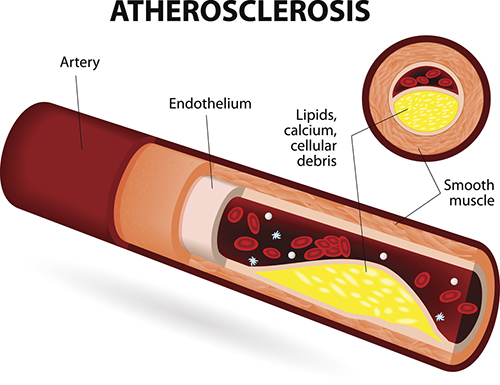Learn
Coronary heart disease, or coronary artery disease (CAD), is the process of plaque buildup in the lining of the heart’s arteries that leads to narrowing of that artery. It is a progressive buildup occurring over time.
The traditional risk factors for coronary artery disease are high LDL cholesterol, low HDL cholesterol, high blood pressure, family history, diabetes, obesity, and smoking.
Go to “Watch, Learn, and Live: Cholesterol and CAD” and view this animation illustrating the process of coronary artery disease (CAD) and cholesterol buildup.
Coronary artery disease (CAD) is a process developing over years where the coronary arteries become narrowed or damaged.
1. Build-up of cholesterol deposits (plaque) along the lining of the coronary blood vessel occurs through a disease process called atherosclerosis.
2. Inflammation and rupture of this plaque then occurs.
3. A blood clot, or thrombus, develops causing complete blockage of blood flow through the vessel.
4. Damage to the heart muscle below the blockage occurs (a heart attack).

![]() Check your understanding...
Check your understanding...
Using this list, what is the correct order of occurrence leading to a heart attack?
1) Rupture of plaque
2) Damage to heart muscle-heart attack
3) Plaque buildup within coronary artery lining
4) Blood flow blocked
5) Thrombus develops
6) Inflammation of artery lining
Answer:
3)Plaque buildup within coronary artery lining
6)Inflammation of artery lining
1)Rupture of plaque
5)Thrombus develops
4)Blood flow blocked
2)Damage to heart muscle-heart attack
